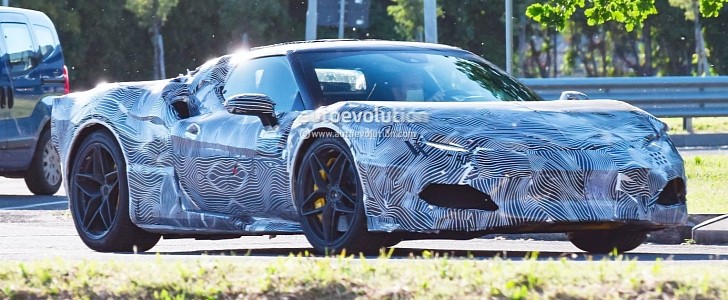Myriads of rumors about Maranello working on a modern iteration of the Dino have been going on for so many years that they are no longer believable, especially since Ferrari has continuously denied them.
That said, the Italian carmaker is indeed working on a V6-powered model, the first one since the original Dino, and it will also be augmented by an electric motor.
Although the Ferrari F8 Tributo is pretty far from having become long in the tooth, with the mid-engine supercar unveiled less than two years ago, its platform’s underpinnings date back to 2009, when the 458 Italia came to life.
The 458’s platform was used on both the 488 GTB and the current F8 Tributo, but it might finally go the way of the dodo once a new V6 hybrid supercar arrives, likely to take the F8 Tributo’s place in the Ferrari lineup.
Take this part with a grain of salt, though, because the model might actually co-exist with the V8-powered F8, just like McLaren’s hybrid Artura hasn’t replaced the V8-powered 720S.
Codenamed F171, the new hybrid Ferrari will use a twin-turbocharged 3.0-liter (or 2.9-liter) V6 augmented by an electric motor. This powertrain will also see action in different states of tune in other models, such as the Purosangue SUV.
Not related in any way with Maserati’s Nettuno, the new V6 is apparently using a 120-degree angle for its cylinder banks, with a small electric motor connected to the crankshaft between the transmission and the internal combustion engine.
No power figures have been leaked yet, but a combined output of around 750 horsepower in the F171 isn’t out of the question.
Unlike the SF90 Stradale, the F171 project is strictly rear-wheel-drive, with the electric motor paired with the engine mainly for torque-filling and anti-lag purposes. Still, it should be powerful enough to move the car on its own for a limited emissions-free range of around 25-30 km (15-19 miles).
Although the Ferrari F8 Tributo is pretty far from having become long in the tooth, with the mid-engine supercar unveiled less than two years ago, its platform’s underpinnings date back to 2009, when the 458 Italia came to life.
The 458’s platform was used on both the 488 GTB and the current F8 Tributo, but it might finally go the way of the dodo once a new V6 hybrid supercar arrives, likely to take the F8 Tributo’s place in the Ferrari lineup.
Take this part with a grain of salt, though, because the model might actually co-exist with the V8-powered F8, just like McLaren’s hybrid Artura hasn’t replaced the V8-powered 720S.
Codenamed F171, the new hybrid Ferrari will use a twin-turbocharged 3.0-liter (or 2.9-liter) V6 augmented by an electric motor. This powertrain will also see action in different states of tune in other models, such as the Purosangue SUV.
Not related in any way with Maserati’s Nettuno, the new V6 is apparently using a 120-degree angle for its cylinder banks, with a small electric motor connected to the crankshaft between the transmission and the internal combustion engine.
No power figures have been leaked yet, but a combined output of around 750 horsepower in the F171 isn’t out of the question.
Unlike the SF90 Stradale, the F171 project is strictly rear-wheel-drive, with the electric motor paired with the engine mainly for torque-filling and anti-lag purposes. Still, it should be powerful enough to move the car on its own for a limited emissions-free range of around 25-30 km (15-19 miles).








